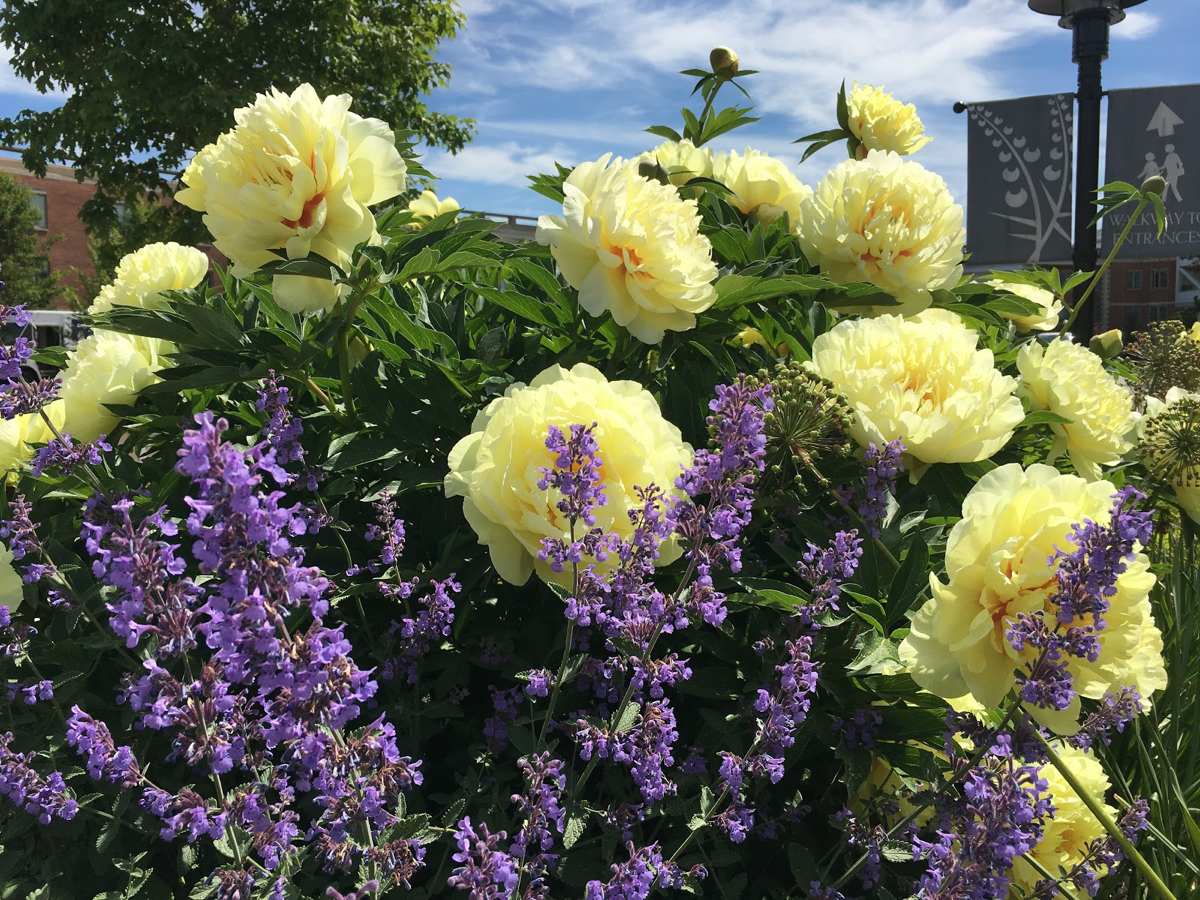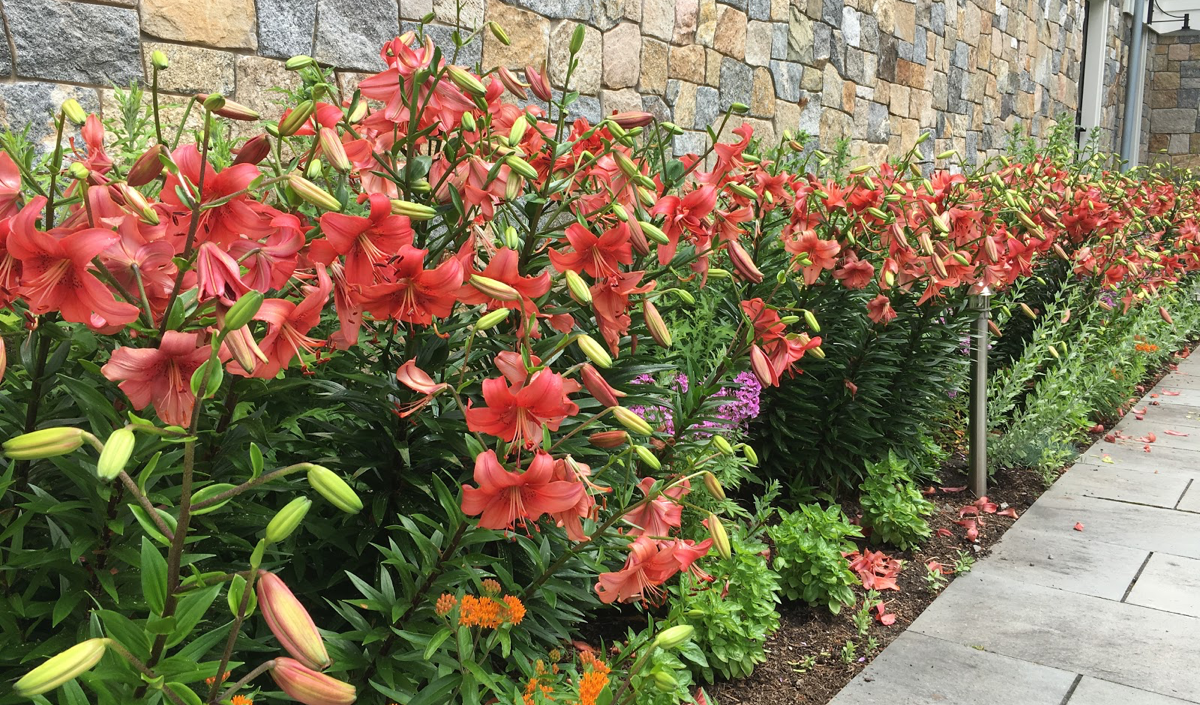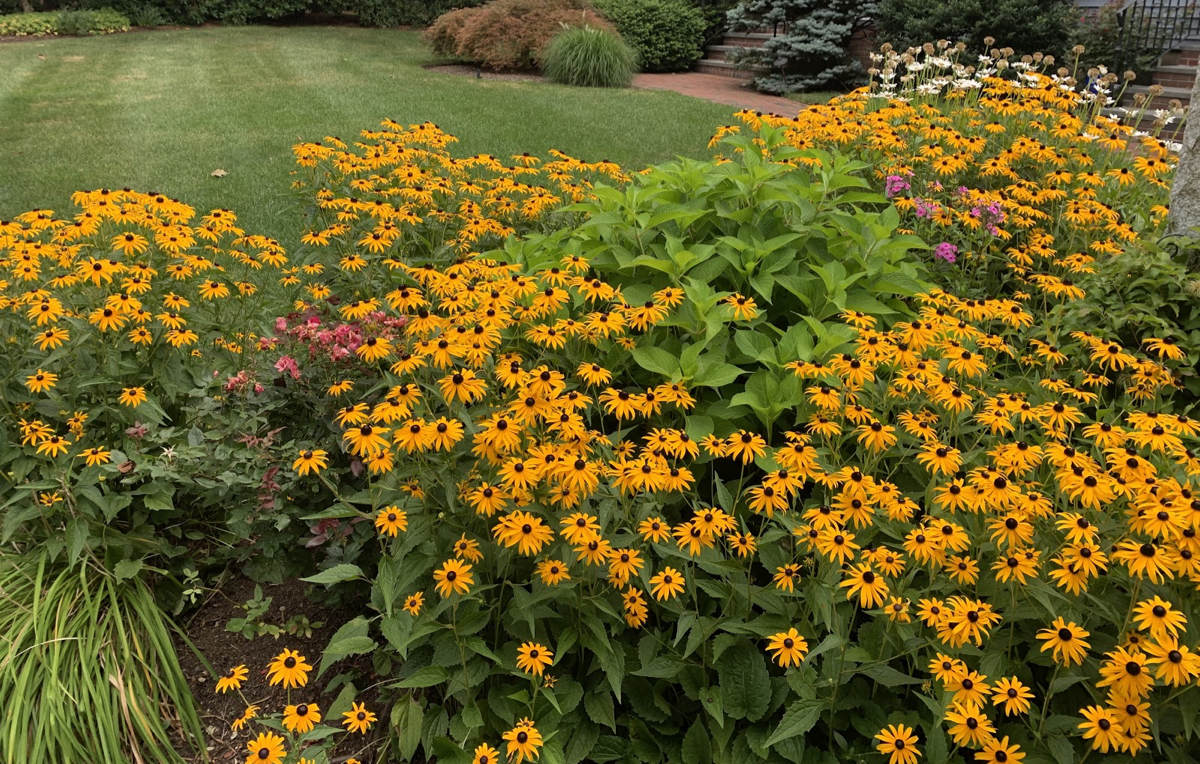One of the most basic mistakes made in the garden, especially by those just starting out, is selecting plants based primarily on whim: “Ooo, that’s a nice flower, or that smells so good, or I really like this color or texture of foliage. I’m gonna buy a few and plant them in my yard!”
Wrong, wrong, wrong. Why?
Wrong because plant selection must begin with considering the ecosystem you are working within, first and foremost. All that wonderful stuff such as flowers, fragrance, and foliage has to come after the foundational elements are sorted out. Understand the soil, the sun, the moisture, and the general exposure of the garden landscape -- how hot, how cold, how windy, how competitive -- before you go plant shopping.
Anyone who endeavors to study the art of landscape design or the practice of landscape development will hear the “right plant, right place” mantra being repeated from class to lecture and from professor to speaker ad nauseum. That is because it is, and always will be, central to whether a plant lives or dies, limps along or thrives.
Starting with this careful analysis of the environmental conditions of your landscape as a whole and each unique garden area specifically is the cornerstone of Fine Gardening. Having clarity around the climate of your area and specific microclimates of your property along with the sun and shade patterns, soil composition, and water availability will enable you to make an informed selection of plants according to their ability to thrive in a specific spot.

ITOH Peony ‘Bartzella’ planted with Nepeta faassenii ‘Walker’s Low’ enjoy this hot park location between sidewalks, patios, and a roadway.
I understand why it’s so easy to get tripped up when going to a nursery. To this day, with nearly 35 years in the business, I still get heart palpitations when I got to a nursery and see some gorgeous plant that beckons me to buy it -- stunning flowers, foliage, and aromas that I feel like I just have to have (I’m running out of room!). But I have to confess that same thing happens to me when I look at really nice shoes or funky rings. The difference? Shoes and rings don’t just up and die on you when you put them in the wrong place or neglect them.
So the lesson? Simply picking plants by what looks good in the moment, or looks like it would “fit” in the desired location doesn’t work. Period. And, more than that, what a group of plants looks like in a garden center offers no guarantee that those plants will work well together in whatever space they’re going to be planted in at your house. Sure, you want to start with healthy, well-formed plant stock that’s been well-tended in the nursery. That’s a must. But if the best plants are planted in the wrong place using the best planting practices, nothing will help those plants to thrive. Plant selection can make or break a garden (and the bank), so there are some landscape do’s and don’ts that can help increase your odds of having a beautiful, vibrant, healthy garden.

TWEETABLE TIP
Anyone who endeavors to study the art of landscape design or the practice of landscape development will hear the “right plant, right place” mantra repeated because it is central to whether a plant lives, dies, or thrives.
VIA @GardenContinuum

The UMass Amherst Extension’s Landscape, Nursery & Urban Forestry Program recommends several site conditions to keep in mind when selecting landscape plants:
- hardiness zone
- light availability, intensity, and duration, from full sun to deep shade
- water availability, both quantity, and quality, as well as ease of access
- exposure to wind and temperature extremes - microclimates
- exposure to weather events - snow loads, erosion, flooding
- soil type, drainage, compaction
- competition from existing vegetation, keeping in mind the roots underground that you can’t see
- below ground conditions in urban sites
- above ground wires or obstructions
I know...this sounds like a lot of work. And yes, it is, but here’s the good news --
it’s front-loaded. Meaning, if you take the time to start learning about the ecosystem in your personal landscape space, in time, you’ll gain some pretty intimate knowledge about your environment. As you learn, you’ll get better and better at selecting the right plants for your landscape. And yes, some things won’t work, even when they are selected and planted perfectly. That’s all part of the gardening experience. But, rest assured, success will be followed by more success, and you will become really good at knowing the landscape details that matter in the garden environment you are trying to build.
A few words about native species. There are many books, blogs, magazines, and nurseries claiming that the answer to all of our gardening troubles is...going native. Native (indigenous) plants can be a good choice for several reasons. They bolster the local environment and habitat and because they have evolved over thousands of years in a particular region, they are ideally suited to the area’s geography, hydrology, and climate.

Asiatic lilies planted with Asclepias tuberosa are thriving in this linear planting bed surrounded by stonework that keeps this bed warm for these dry heat-loving plants.
Native plants require fewer pesticides than non-native selections and fewer fertilizers, if any. Eventually, once established, they use less water and can help reduce air pollution. And, as an added bonus, they provide food and shelter for local birds, butterflies, and other pollinators and wildlife.
However, even native plants should be selected and planted according to their specific needs in terms of sun, water and soil conditions. And they should be grouped in companion-planting schemes with other plants that want similar conditions.
The misunderstanding I often encounter is the belief that planting native is better, easier, and cheaper, therefore requiring less thinking, planning, or aftercare. And that belief is simply inaccurate. Native plants need as much consideration as non-natives when making your selections. And I want to go on the record as saying that non-natives are not unilaterally bad, nor should they be avoided just for not being native. Invasive species, on the other hand, need to be avoided. But, that’s another blog post altogether.
The last word is reserved for plant size. One of the most common questions I get from clients when we are talking about plant selection is, “how big does it get?” The inquiry is born out of an understandable desire to have a low maintenance landscape that will behave. In other words, not get overgrown.
I suspect that in this case it may be seen as unfortunate that plants grow. But they do, so I’ll touch on plant size and growth rates. The ultimate size of a plant is not only genetically coded in its DNA, but it’s also proportionally related to the resources that plant has access to and the conditions in which it’s grown. If you do all this work to plant the right plant in the right place, it will be happy. That’s awesome. Happy plants grow!

TWEETABLE TIP
The ultimate size of a plant is not only genetically coded in its DNA, but it’s also proportionally related to the resources that plant has access to and the conditions in which it’s grown.
VIA @GardenContinuum

Now that you know what to look at in the ecosystem to determine if a plant will thrive in the location you’ve selected for it, the next step is to ask three simple questions following this statement:
Knowing that I am purchasing a healthy plant that will thrive in the environment I’m providing for it:
- how big does this plant want to get?
- how much space do I have to offer it?
- how easy or difficult will it be to prune in order to manage it in this space?
A side note here: when I write “prune,” I mean mindfully pruning with bypass pruning shears, loppers, or pruning saws at the appropriate time. I do NOT mean chopping, hacking, or otherwise mutilating the plant to subjugate it in a tight space. Fine Gardening magazine offers a nice guide for beginners
The answers to these questions will further guide your plant selection effort. A plant that grows fast and can be pruned easily while maintaining its natural form and vigor (such as an Itea virginica) is easier to work with than a plant that grows fast and is rather difficult to prune and maintain its form (such as a Viburnum plicatum f. tomentosum).
Clearly, the lesson in this blog is that success comes from collecting data from your environment and then selecting plants that fit the conditions that the environment has to offer. Plants that look great today will likely become too big in ten or twenty years when they have everything they need to thrive from the start.
The simple solution is to have a Fine Gardening management plan in place before planting as a prudent piece of the landscape and gardening puzzle. Employ that plan when the landscape is young so it doesn’t “get away” from you. Small moves to care for and manage the well-selected plants in your landscape early on in its establishment will make for a wonderful oasis in nature that you can call home.
Learn more about Fine Gardening by downloading the eBook titled "The Fine Gardeners Guide to a Beautiful and Luxurious Landscape" today.









Leave a comment